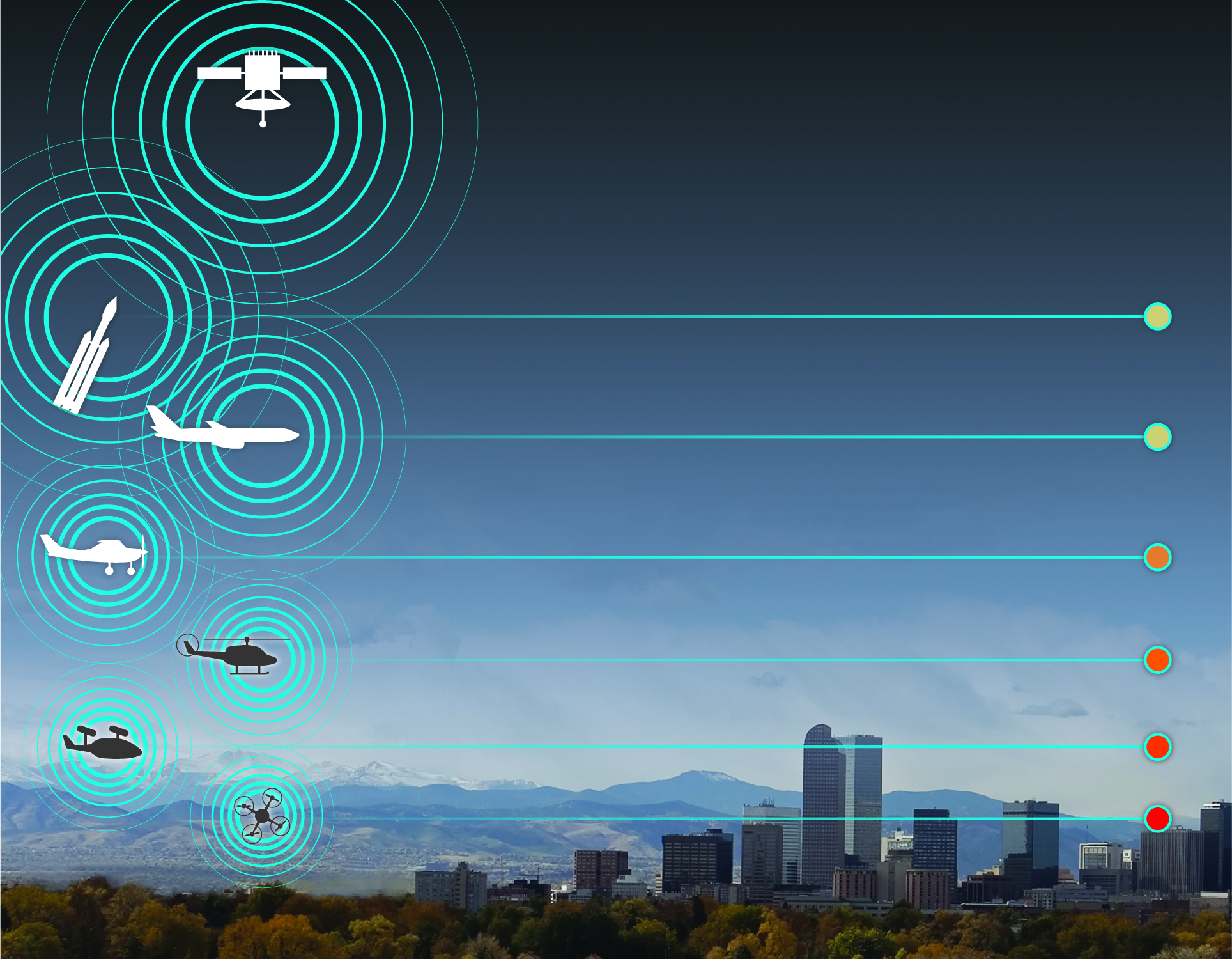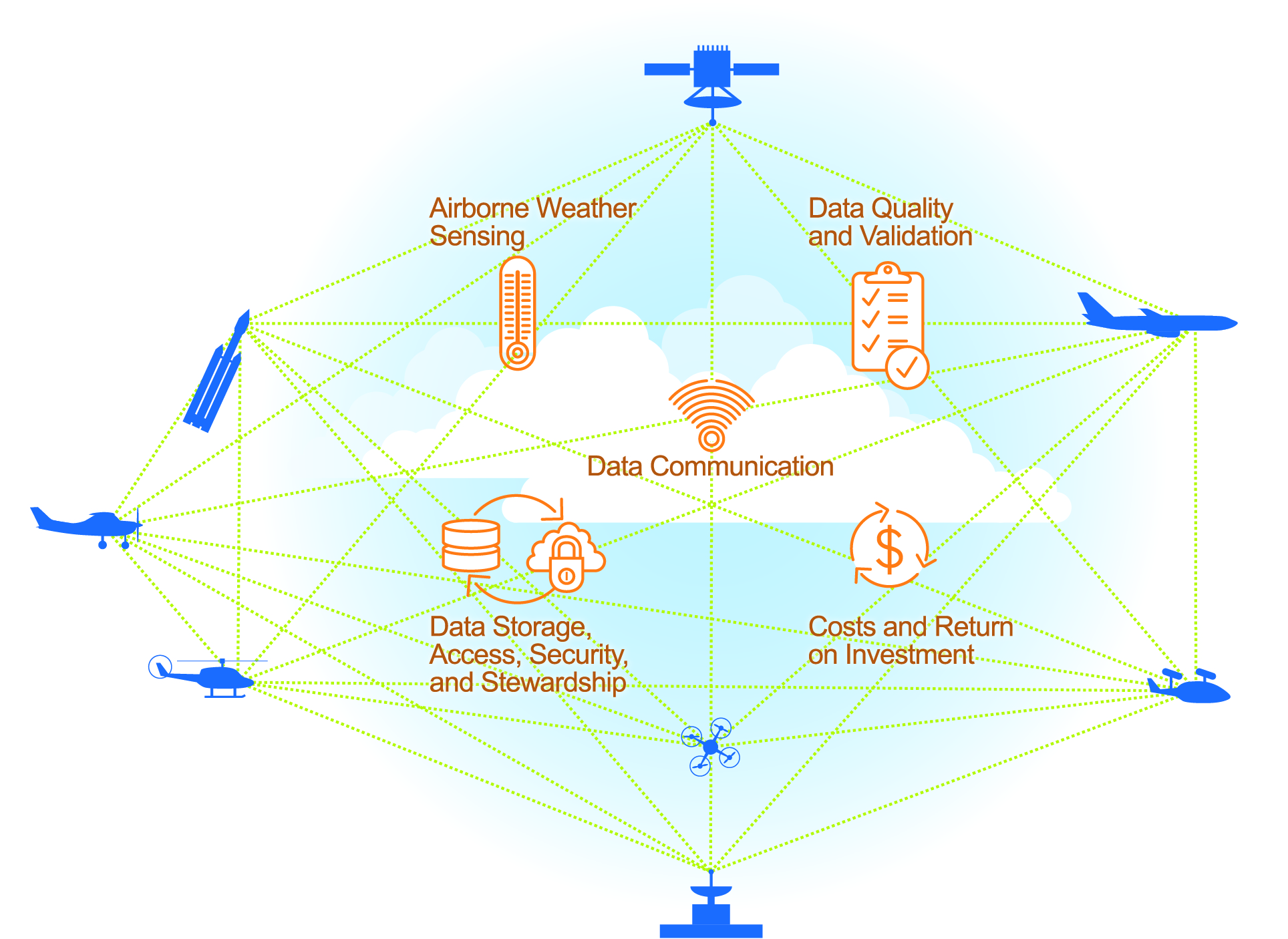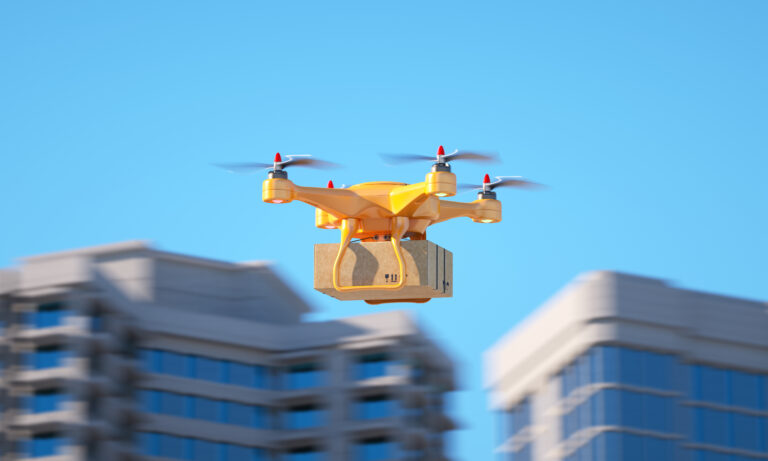Aviation and meteorology have grown up together through a mutually beneficial relationship.1,2 Weather affects the safety, efficiency and reliability of aviation, and aviation is one of the key contributors of weather data aloft, thus enhancing weather prediction.
At present, aviation is undergoing a dramatic transformation through the rise of the small unmanned aerial system (sUAS) (left) and electric vertical take-off and landing (eVTOL) aerial vehicles envisioned for on-demand ridesharing across metropolitan areas.3 This emerging advanced aerial mobility will occupy the lowest layers of the atmosphere (5,000ft and below), an altitude band that has been largely devoid of weather observations.
Thus, imagine a future in which every aeronautical vehicle operating in the airspace system of the USA, for example, would provide consistent, in situ weather observations. How would this improve the mission execution for all modes of aerial transportation? How might that weather information be used to improve all weather and weather impact predictions, thus enhancing benefits to society as a whole?
That is exactly the assertion that Robinson et al (2020)4 are making: All aeronautical vehicles operating in the airspace of the USA should be required to measure, transmit and share the in situ meteorological conditions encountered along the flight trajectory.
Reporting all conditions is absolutely key. Benign conditions for large aircraft may be hazardous for small aircraft due to their significantly increasing sensitivity to weather. Moreover, future automated
and eventual autonomous operations will require advanced weather sensing capabilities to ensure safe and efficient operations.

Adding value
This position for mandatory weather reporting will create opportunities and add value that ultimately outweighs the investment. The emerging modes of transportation, such as eVTOLs and sUASs operating in non-traditional airspaces, pose more stringent requirements on our weather monitoring and prediction capabilities than can be satisfied at present.
The scientific community aims to improve its understanding of atmospheric processes in the lower levels above Earth’s surface (i.e. 0-5,000ft AGL) and especially complex environments, such as rugged terrain and urban landscapes, or near thunderstorms. Detailed observations are essential to further the scientific understanding, which in turn enables better predictions – not just of weather, but also of outcomes or responses influenced by weather.
While many observations are available at ground level, relatively limited observations are made aloft. Through the proposed mandate, a wealth of new and needed observations will become available (e.g. from sUAS and eVTOL vehicles operating in the lower parts of the atmosphere), thus greatly expanding the already long and mutually beneficial synergy between aviation and meteorology.
It has been clearly demonstrated that observations made by large transport category aircraft have a huge positive impact on numerical weather prediction systems.5 It is anticipated that the emerging new stream of meteorological observations from vehicles operating in non-traditional airspaces and emerging crowdsourcing of individual observation stations will substantially enhance our weather prediction capabilities, in turn yielding increased safety, efficiency and reliability of aviation operations and public safety at large.
Regulatory challenges
As the number of aeronautical vehicles across multiple aviation sectors that support ubiquitous weather data increases dramatically over time, formal data stewardship will be required to ensure proper retrieval and storage, appropriate data quality (validation) and ease of access for approved data users.
Today, there are multiple organizations that feel they own this responsibility, such as the International Air Transport Association (IATA) for objective turbulence information from commercial aircraft, NOAA NWS for all aircraft meteorological data relay (AMDAR) data in the USA and Flyht Aerospace Solutions Ltd for all tropospheric airborne meteorological data reporting (TAMDAR) data worldwide. These efforts will serve as initial roadmaps and provide some best practices for data stewardship.
At present, a relatively small number of operators have invested in advanced in situ weather observation systems that provide objective reports of relative humidity, turbulence and icing. These operators consider that the weather information they collect belongs to them, even while understanding and appreciating its potential impact on flight safety; they share it only with other operators who have also invested in similar advanced in situ weather observation systems and share the same hazardous weather information with them.
This question of data ownership and access becomes significantly more complex when there are many more operators involved, including substantially more commercial companies using sUAS and eVTOL vehicles to support both direct and indirect business objectives. The advocated mandate requires that all vehicle owners and operators must observe weather and share it with a larger community.
However, scenarios where collective access could be considered unfair or inequitable, as well as potential opportunities to manipulate this agreement, can be envisioned. Thus, data ownership and access agreements will indeed require careful consideration, and more detailed evaluations of best practices for similar situations in other domains (for example energy, natural resource access).
Communal use of weather data collected from many individual users may come with conditions for use that will need to be defined and implemented. For example, shared weather data will likely need to be encrypted and its source de-identified to better protect privacy concerns. These types of data privacy steps will help companies and organizations maintain some anonymity when operating aeronautical vehicles for purposes specific to their business or operation.
To prevent misuse of information, the proposed mandate must closely consider how best to define, implement and govern data privacy policies and technologies. Moreover, methods to be deployed for communicating and relaying information from one aeronautical platform to another, or from an aircraft to the ground, will be at risk for cyber interference. The implication of such intrusion to airborne automation systems is great, and significant consideration is needed to determine how best to protect aeronautical vehicles, the environment in which they operate and vast archives of collected data from bad actors.

Overcoming barriers
We are looking at a data-rich future, where sharing of data and information will yield greater benefits to air transportation (and beyond) than can be achieved individually by organizations and/or operators. The right time to consider such a mandate is now, as this new class of emergent vehicles is still ramping up, thus presenting more advantageous equipage opportunities.
The overall path forward to ultimately realizing the envisioned benefits, however, is not easy. There are many hurdles along the way, related to technical (e.g. sensors, communication), cost (installation, operation, return on investment) and regulatory aspects (data standards, ownership, cybersecurity, etc) that will need to be worked out.
In addition, trade-off and benefits studies will be needed to address how all that data would best be used. These studies will include offline scientific investigations focused on process understanding and development of predictive capabilities, as well as real-time uses of such data to support more complex
(and, in parts, autonomous) aviation operations and innovative data assimilation procedures for even broader societal applications and benefits.
The coming decade is considered to be the right time to provide significant weather impact mitigations and to reduce the weather sensitivity of the aviation and aerospace industries and society at large. Using recent breakthroughs in vehicle, sensor, communications and computing technologies, we believe the aviation, aerospace and meteorological communities are ready to collaboratively leverage big data analytics, cloud storage, networking, AI and material innovations to: collect, provide and apply ubiquitous weather data for significant air travel safety, efficiency and reliability improvements for all current operations;
address the new operational concepts to be deployed in the airspace systems around the world over the next decade; and at the same time produce significant weather forecast improvements that benefit overall societal safety and well-being.
References:
1. S Haupt et al, 100 years of progress in applied meteorology. Part I: Basic applications, (Chapter 22), A Century of Progress in Atmospheric and Related Sciences: Celebrating the American Meteorological Society Centennial, Monograph No 59, American Meteorological Society (AMS), 2019.
2. J Stith et al, 100 years of progress in atmospheric observing systems (Chapter 2), A Century of Progress in Atmospheric and Related Sciences: Celebrating the American Meteorological Society Centennial, Monograph No 59, American Meteorological Society (AMS), 2019.
3. M Steiner, Urban Air Mobility – Opportunities for the Weather Community, Bulletin of the American Meteorological Society, 100(11), 2131–2133, 2019.
4. M Robinson et al, What if every aeronautical vehicle operating in our airspace were to report weather conditions?, 20th Aviation, Range, and Aerospace Meteorology Conference, Boston, MA, 28 pp, 2020.
5. E James and S Benjamin, Observation System Experiments with the Hourly-updating Rapid Refresh model using GSI Hybrid Ensemble-variational Data Assimilation, Monthly Weather Review, 145(8), 2897–2918, 2017.
This article was originally published in the September 2020 issue of Meteorological Technology International



